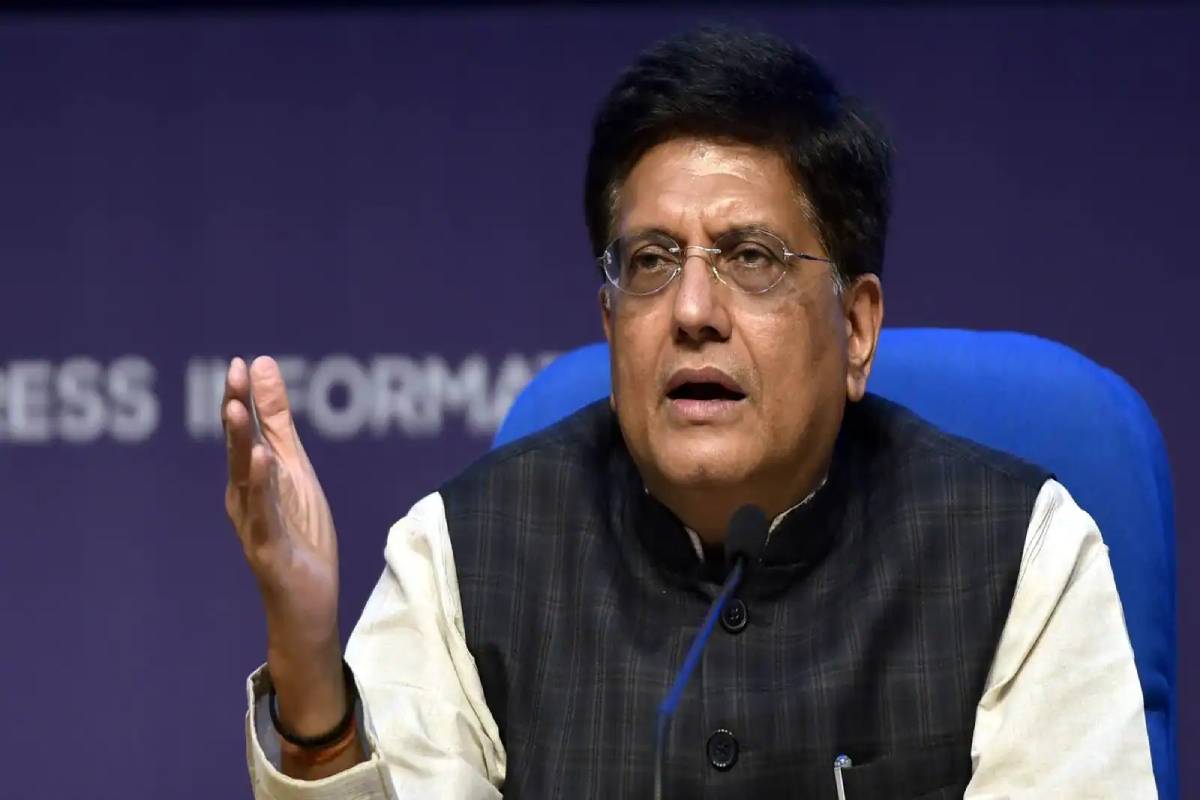J&K Opposition leaders to meet against Centre making LG the boss
Tarigami said all the leaders of Opposition parties have been requested to attend the meeting.
The Foreign Trade Policy (FTP) 2023 aims to increase India’s exports to $2 trillion by 2030 and promote international trade settlements in the domestic currency.

Union Minister of Textiles and Commerce Piyush Goyal(file photo)
Pitush The government on Friday announced the country’s new Foreign Trade Policy (FTP) 2023, which aims to increase India’s exports to $2 trillion by 2030 and promote international trade settlements in the domestic currency to make the Indian rupee a strong global legal tender.
Commerce and Industry Minister Piyush Goyal unveiled FTP 2023 which will come into effect from April 1. The Foreign Trade Policy 2015-20, which was to end in March 2020 was extended due to the Covid-19 pandemic and volatile geo-political scenario and was set to end today.
Unlike the past the FTP used to run for five years, the latest policy has no end date and will be updated as and when needed, Director General of Foreign Trade (DGFT) Santosh Sarangi told the media.
Advertisement
He also announced that India was likely to end this fiscal year with total exports of $760-770 billion as against $676 billion in 2021-22.
The new FTP identifies four new Towns of Export Excellence (TEE) — Faridabad, Moradabad, Mirzapur and Varanasi — in addition to the already existing 39 TEEs.
The FTP benefits have been extended to e-commerce exports, which are estimated to grow to $200-300 billion by 2030. The value limit for exports through courier service is being increased from Rs 5 lakh to Rs 10 lakh per consignment, he said.
Sarangi said FTP 2023 was dynamic and responsive to the emerging trade scenario. He also said the department of commerce was being restructured to make it “future-ready”.
A significant feature of FTP 2023 is that International trade settlements in rupee are allowed and changes have been introduced for the grant of export benefits and fulfilment of export obligations for export realisations in Indian currency as per RBI norms.
The government has been working towards making the Indian rupee a global currency and allowing international trade settlements.
The RBI had last year put in place an additional arrangement for invoicing, payment, and settlement of exports/imports in Indian currency. This mechanism is likely to help in internationalising the Indian currency in the long run. A currency can be
Under the new policy, provisions for merchanting trade are also proposed. A merchanting transaction is one which involves the shipment of goods from one foreign country to another foreign country involving an Indian Intermediary. The government believes merchanting trade will help make India a trade hub.
Also, four new towns of export excellence (TEE) are being declared in addition to the already existing 39 towns of export excellence. They are Faridabad for apparel, Moradabad for handicrafts, Mirzapur for handmade carpets and dari, and Varanasi for handloom and handicrafts.
The benefits of such export excellence are recognition, a market access initiative scheme, and a common service provider facility.
Meanwhile, India’s projected growth (in 2023) is more than double the projected growth for the world. In the past six-to-seven years, India’s exports have risen by about 75 per cent, as compared to 28 per cent at the global level. During the period, engineering and agricultural exports rose 81 per cent and 61 per cent, respectively. Pharma and electronics goods rose 45 per cent and 163 per cent, respectively.
Battery electric vehicles (BEV) of all types, vertical farming equipment, wastewater treatment and recycling, rainwater harvesting system and rainwater filters, and green hydrogen are added to green technology products will now be eligible for reduced Export Obligation requirement under the Export Promotion Capital Goods Scheme.
For ramping up e-commerce exports, all benefits under the trade policy will be extended to the exporters. Special outreach and training activities for small e-commerce exporters will be ensured.
Government estimates suggest that e-commerce exports are expected to grow to $200-300 billion by 2030. It will set sector-specific targets to achieve the goal of trillion-dollar merchandise exports by 2030.
Advertisement